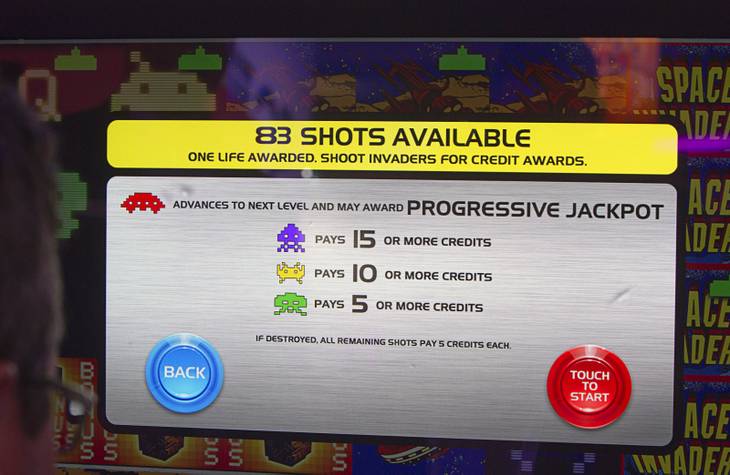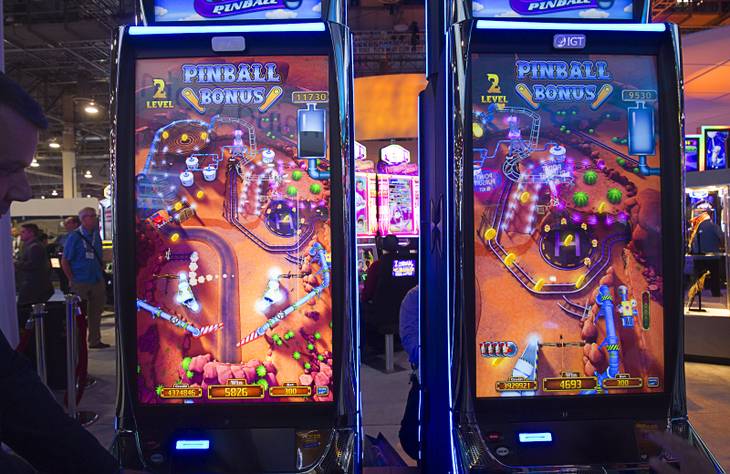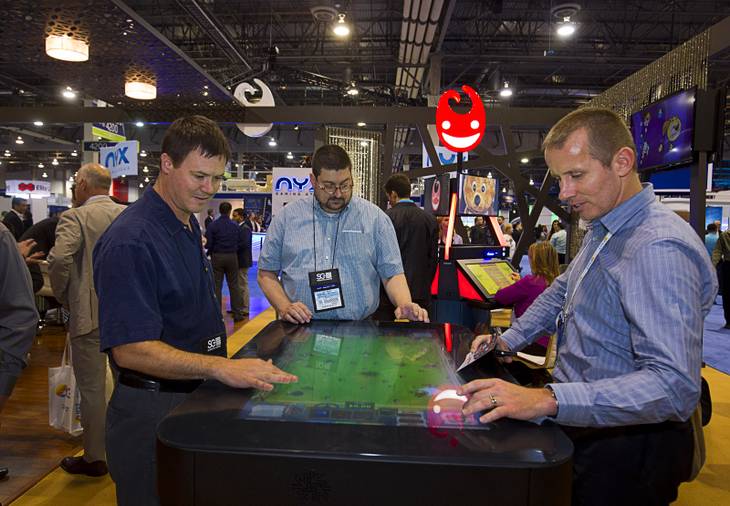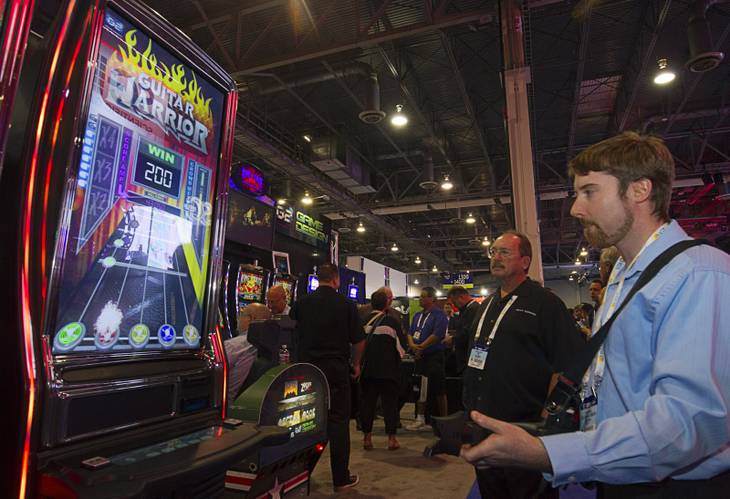Skill and interactivity were the words of the week on the showroom floor of this year’s Global Gaming Expo.
The annual casino industry conference, also known as G2E, wrapped up Thursday after several days showcasing some of the most cutting-edge products from gambling companies. Set against the backdrop of Nevada’s recent moves to regulate the development of skill-based slot machines, the conference’s showroom provided a window into how companies are reacting to the new environment.
What was shown off at G2E represents only the beginning of how game companies will make products that give casino floors a more arcade-like feel. After all, the regulations were only finalized two weeks ago, and more work — namely, the approval of technical standards — remains.
Nonetheless, it was no coincidence that some of the most interesting products in the G2E showroom contained an element of skill — or at least a level of player interaction that goes beyond what traditional slot machines offer.
To illustrate, here’s a brief look at how five companies explored those characteristics at G2E.
-
Scientific Games
The Space Invaders slot machine from Scientific Games Corp., one of the industry’s most dominant companies, goes beyond a simple theme based on the classic arcade game. In essence, it’s part traditional slot machine, part skill-based throwback: Customers spin virtual reels until they get to a bonus round, where they’re given the option of trying their luck or testing their skill.
Choosing luck brings the player to a traditional round of free spins; skill requires them to basically play a short video game. Players earn points by shooting down rows of enemy aliens while trying to avoid their incoming missiles. Company spokesman Mike Trask noted that the game was reminiscent of the Total Blast slot developed by Bally Technologies, which Scientific Games acquired last year.
Scientific Games also displayed a slot game based on the television show “The Simpsons.” It is not exactly a skill-based game, but it does contain an element in which players can stick their hand in front of a motion sensor to move a virtual hand on the screen. Doing so allows them to engage with a bonus round by catching sprinkles as they fall, for example.
-
International Game Technology
International Game Technology PLC, another one of the industry’s biggest players, has not sat on its hands while the skill-based slots trend gets underway. IGT exhibited a version of its Texas Tea game that plays like a normal slot until players reach the bonus round, at which point it becomes a virtual pinball game. At that point, a player’s skill takes over.
Aside from that foray into the skill world, IGT also showcased games that featured elements of interactivity and an eye toward the digital. The company’s TMZ slot machine, for example, incorporates a photo booth feature that allows players to take a selfie and integrate that into the game, including into a bonus round. And IGT’s Orange is the New Black slot, based on the Netflix show, was rolled out simultaneously on IGT’s DoubleDown social casino — the company’s first time doing so with a premium licensed brand game, spokesman Phil O'Shaughnessy said.
-
Gamblit Gaming
The company has been a prominent voice in discussions about Nevada’s embrace of skill in slot machines, but Gamblit Gaming’s products are not yet available on casino floors in the state. They’re coming, company executives say, and in the meantime Gamblit offered a preview at G2E of what may eventually be in store for Nevada players.
One game, Smoothie Blast, requires players to match different kinds of fruits — similar to Candy Crush — which then go into a blender. A wager runs when the blender is full, and payouts vary depending on the blender’s contents. Gamblit showed that game in a station meant for single players.
Gamblit also showed games that were featured on interactive tables meant for multiple players. One of those games was Grab Poker, in which players try to build a winning hand by competing to choose cards as they rapidly appear on the table. It’s meant for up to four players, and the winner takes the pot.
-
Next Gaming/G2
These two companies partnered to display games that look more like they would be found in a living room than on a casino floor. One of their products, which combines skill and chance, is similar to the classic Guitar Hero game: Players attempt to hit notes as they move past on a screen to successfully play a song.
Hitting notes translates into an opportunity to win cash, and the players also earn skill points that could be used to create rankings on a leaderboard. A casino might then theoretically use that leaderboard to reward players with entry into a tournament, said Mike Darley, chief executive of Next Gaming.
Another game the companies showed, in first-person-shooter style, involved a similar blending of skill and chance to award payouts.
-
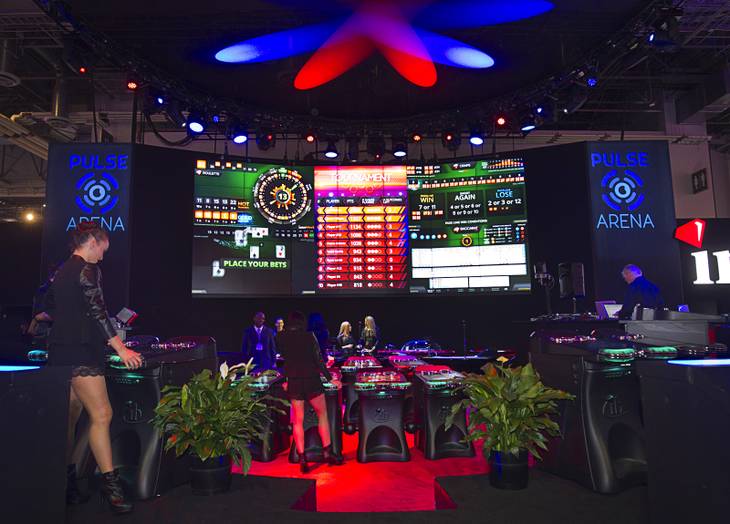
Interblock
Slot machine-style games were not the only places where companies at G2E were focusing on interactivity. Interblock displayed an arena for electronic table games in which numerous tables can be situated around a few live dealers and large electronic screens. At their station, gamblers can play with one of the live dealers or choose an automated version of a table game. The setup at G2E also featured a DJ and a virtual “emcee” on the screen.

